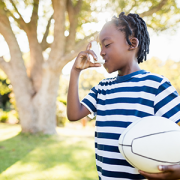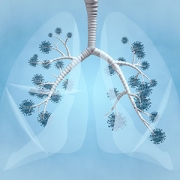Social determinants of health and asthma morbidity in youth

Researchers believe these findings can help develop localized interventions that can improve pediatric asthma in affected communities.
In a study published in the journal Pediatrics, researchers from Children’s National Hospital found that census-tract measures of decreased educational attainment and increased violent crime were associated with increased census-tract rates of pediatric asthma morbidity.
“Knowing these adverse measures of social determinants are associated with increased asthma-related emergency department and hospitalization at-risk rates, may be an opportunity to inform community-based interventions to reduce pediatric asthma morbidity,” says Jordan Tyris, a hospitalist and lead author of the study.
Researchers evaluated data from 15,492 children with asthma, ages 2-17, living in Washington, D.C., from January 2018 to December 2019. The team discovered that living in areas with greater violent crime and less educational achievement were associated with higher rates of hospitalizations and emergency department visits for asthma, in comparison to other social determinants.
The study authors suggest that there may be complex reasons behind this data, noting that violent crime can reflect toxic stress, less education can be associated with less knowledge about health and medicine and that children in these communities may be less likely to have primary care doctors. Researchers believe these findings can help develop localized interventions that can improve pediatric asthma in affected communities and that more research is needed on the drivers of asthma related sickness, including toxic stress, structural racism and access to medical care.
Other study authors include Anand Gourishankar, M.D., Nikita Kachroo AE-C, Stephen Teach, M.D., Kavita Parikh, M.D., all of Children’s National Hospital and Maranda C. Ward, Ed.D., MPH, of George Washington School of Medicine and Health Sciences.











